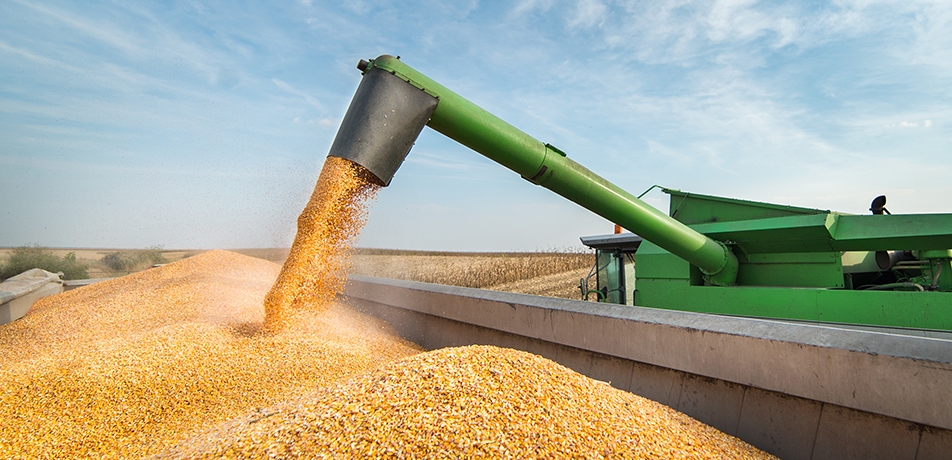Scrap the meat
Might plants be the key to food security?
Briefs

Wheat harvest
Weizmann Institute scientists have determined that a plant-based diet could generate far more protein per acre than the current animal-based diet of beef, chicken, dairy, and eggs on which most of the world depends, thereby preventing the squandering of precious environmental resources.
Around the planet, a striking one-third of food generated for human consumption goes to waste. Yet the biggest food loss, not accounted for in this figure, may actually stem from the use of massive amounts of agricultural land to produce feed for our animal-based dietary choices—land that might otherwise have been used to generate far more protein-based foods per acre.
Exploring this second type of wastage, the lab of Prof. Ron Milo in the Department of Plant and Environmental Sciences found that switching to a plant-based diet would allow the U.S. to feed all 327 million Americans—and about 350 million more. The study, published in the Proceedings of the National Academy of Sciences (PNAS), reported on a novel method to define and quantify the phenomenon of so-called “opportunity food loss,” showing that a plant-based diet nutritionally equivalent to the animal-based option can potentially yield more food than eliminating all the conventionally defined causes of food loss. The scientists coined the term “opportunity food loss” based on the “opportunity cost” concept in economics, which refers to the cost of choosing a particular alternative over better options.
The lead author was Dr. Alon Shepon, from the lab of Prof. Milo, who collaborated with Prof. Gidon Eshel of Bard College in New York and Dr. Elad Noor of ETZ Zürich.
The scientists compared the land resources necessary to produce five major categories of animal-based foods in the US—beef, pork, dairy, poultry, and eggs—with those required to grow edible crops of similar nutritional value in terms of protein, calories, and micronutrients. Across these categories, they found that plant-based substitutes could generate two to 20 times more protein per acre. They achieved these findings using a combination of earlier quantifications they performed of the US food system’s environmental performance and linear programming—a method that aims to uncover the optimal outcome in a mathematical model.
The most dramatic results arose from their assessment of beef. The researchers compared beef to a mix of crops—soy, potatoes, cane sugar, peanuts, and garlic—that could provide similar nutrients when consumed in the right proportions. In the same land area that could produce 100 grams of edible protein from these crops, beef could only yield four grams. In other words, using agricultural land for cultivating beef products instead of plant-based substitutes results in an opportunity food loss of 96 grams—or a loss of 96% per unit of land.
“Beef has low conversion efficiency from feed to meat,” Prof. Milo says. “It is a result of its biological properties, its long gestation time, and relatively slow growth rate. Milk production is a different biological process, which is also resource-intensive, but not nearly as much as conversion of animal sources into beef.”
But failing to replace other animal-based foods with nutritionally similar crops also results in enormous losses, as well. According to the scientists’ calculations, the opportunity food losses were 90% for pork, 75% for dairy, 50% for poultry, and 40% for eggs—figures that, they say, warrant cause for concern.
“Opportunity food loss must be taken into account if we want to make dietary choices enhancing global food security,” Prof. Milo says.
The researchers consulted with a number of economists and used other referenced studies to assess how switching to plant-based diets might affect the US economy. Such a transformation, Prof. Milo explains, would prompt a structural change in the economy, with several sectors changing and new jobs emerging as others are lost.
Prof. Ron Milo is supported by the Mary and Tom Beck – Canadian Center for Alternative Energy Research which he heads, Dana and Yossi Hollander, the Larson Charitable Foundation, and the Zuckerman STEM Leadership Program. He is the incumbent of the Charles and Louise Gartner Professorial Chair.







